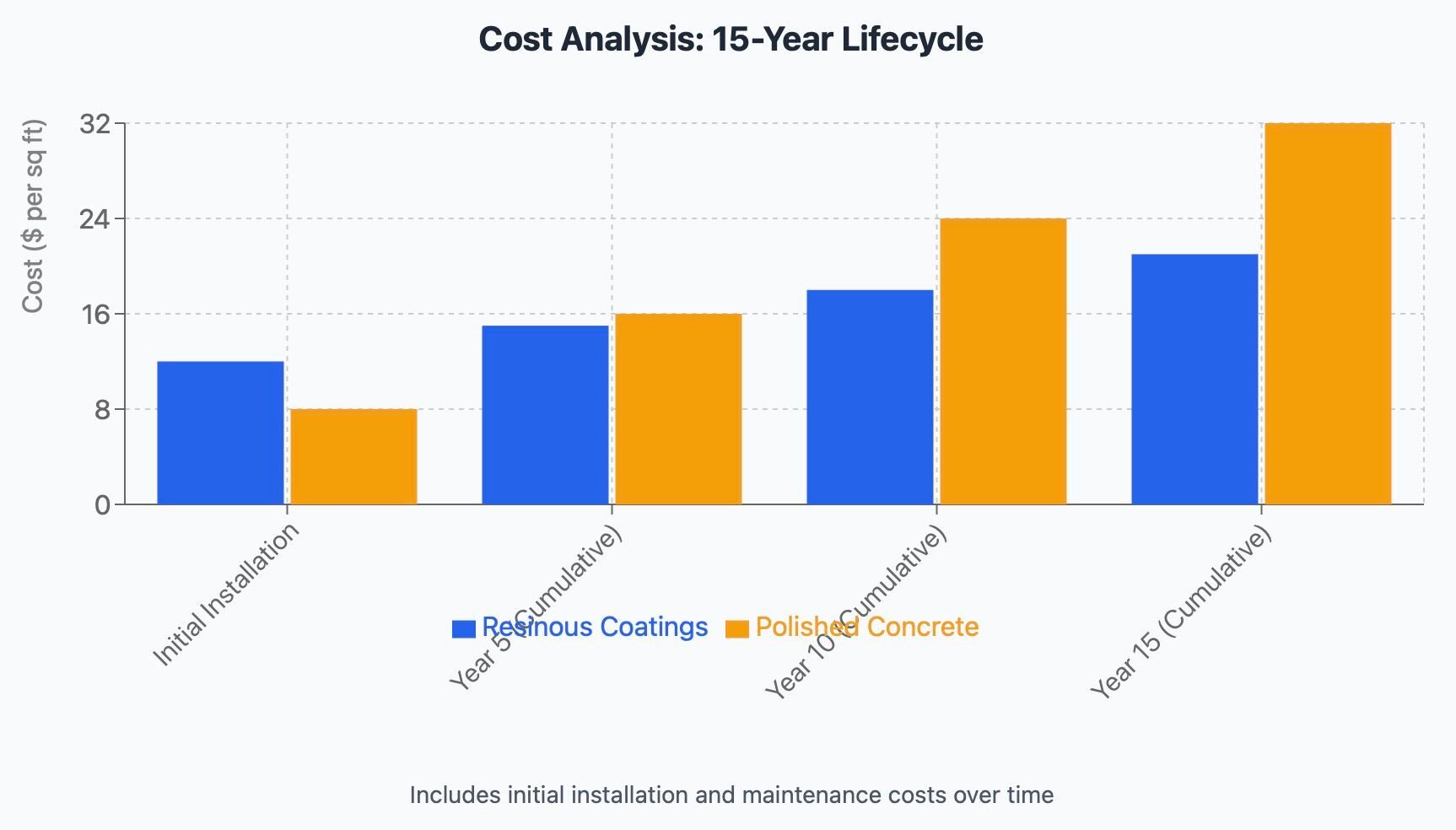
Resinous Flooring for Schools, a Comparison To Polishing
Resinous floor coatings offer an excellent solution for schools, providing durability, aesthetic versatility, and significant advantages over traditional polished floors.
- High Performance Coatings
Ensuring the longevity and durability for high traffic resinous flooring.
Resinous Flooring For Schools, a Comparison to Polishing
School floors take a beating. From the constant foot traffic of hundreds of students to spills in cafeterias and science labs, educational facilities need flooring solutions that can withstand intense daily use while maintaining their appearance. Resinous floor coatings offer an excellent solution for schools, providing durability, aesthetic versatility, and significant advantages over traditional polished floors.
Key Benefits of Resinous Floor Coatings
- Exceptional durability - withstands heavy foot traffic for 10-20+ years
- Chemical resistance - protects against lab spills, cleaners, and food acids
- Customizable aesthetics - endless color and design possibilities
- Seamless application - eliminates dirt-collecting joints and seams
- Easy maintenance - requires only routine cleaning
- Safety features - customizable slip resistance for different areas
- Environmentally friendly options - low-VOC and sustainable formulations available
What Are Resinous Floor Coatings?
Resinous floor coatings are seamless, fluid-applied systems that create a protective layer over concrete substrates. These high-performance coatings typically consist of epoxy, polyurethane, or polyaspartic resins that form a chemical bond with the concrete below, creating a virtually impenetrable surface.
Unlike traditional flooring materials, resinous coatings penetrate the concrete's pores to create a mechanical bond that prevents delamination. The application process typically involves multiple layers, including primers, base coats, and topcoats, each serving specific functions:
- Primers: Ensure proper adhesion to the substrate and seal concrete pores
- Base coats: Provide thickness, durability, and can incorporate decorative elements
- Topcoats: Add UV stability, chemical resistance, and determine the final appearance
This multi-layer construction creates a unified system that offers superior performance compared to simple surface treatments like polishing.
Types of Resinous Coatings for Educational Environments
Epoxy Flooring Systems
Epoxy floors provide excellent chemical resistance and durability, making them ideal for science laboratories, art rooms, and cafeterias. They can be installed in varying thicknesses depending on the expected wear and tear.
Epoxy systems come in several formulations:
- Self-leveling epoxy: Creates perfectly smooth surfaces ideal for classrooms and administrative areas
- Mortar systems: Incorporates aggregates for extreme durability in maintenance areas and kitchens
- Decorative broadcast systems: Uses colored quartz or vinyl flakes for aesthetic appeal with slip resistance
The molecular structure of epoxy creates an exceptionally hard surface that resists impacts and abrasion. Modern formulations also offer faster cure times than older generations, reducing installation disruption for schools.
Polyurethane Coatings
These coatings offer superior scratch and abrasion resistance while providing excellent flexibility, making them perfect for gymnasiums and multi-purpose areas.
Polyurethane's molecular structure includes elastic segments that allow the coating to flex slightly under impact, then return to its original shape. This characteristic makes it:
- Ideal for areas with temperature fluctuations
- Resistant to cracking in spaces that experience structural movement
- Less brittle than pure epoxy in extremely cold environments
Many school installations use hybrid systems—epoxy base coats for build and durability, topped with polyurethane for flexibility and UV resistance, creating the best attributes of both materials.
Decorative Options for School Environments
One of the most compelling aspects of resinous floor coatings is their aesthetic versatility:
School Branding Opportunities
Incorporate school colors, mascots, and logos directly into hallways and common areas to build school spirit and pride.
This can be achieved through:
- Custom color blending to match exact school colors
- Embedded logos using cut-in techniques or vinyl graphics
- Alternating colors for zone designation in open spaces
The psychological impact of branded environments helps create a sense of belonging and pride among students, potentially contributing to better behavioral outcomes and school attachment.
Wayfinding Systems
Use different colors or patterns to create intuitive navigation paths throughout the facility, helping students and visitors find their way.
Effective wayfinding floor designs can:
- Reduce congestion during class transitions
- Help younger students navigate complex buildings
- Support ADA compliance with visual cues
- Provide emergency evacuation guidance
Studies show effective wayfinding can reduce tardiness and improve new student adaptation by as much as 30%.
Themed Educational Designs
Create educational floor designs like maps, periodic tables, or mathematical equations in relevant classrooms or areas.
These interactive floor elements:
- Reinforce curriculum concepts through environmental learning
- Create opportunities for kinesthetic learning activities
- Serve as teaching tools for visual learners
- Make educational spaces more engaging
Terrazzo-Like Finishes
Achieve the elegant look of terrazzo with metallic epoxy or flake systems at a fraction of the cost of traditional terrazzo.
These systems provide:
- Similar visual appeal to terrazzo at 40-60% lower cost
- Significantly faster installation (days vs. weeks)
- Greater flexibility and crack resistance
- Simpler maintenance requirements
Why Resinous Coatings Outperform Polished Concrete in Schools
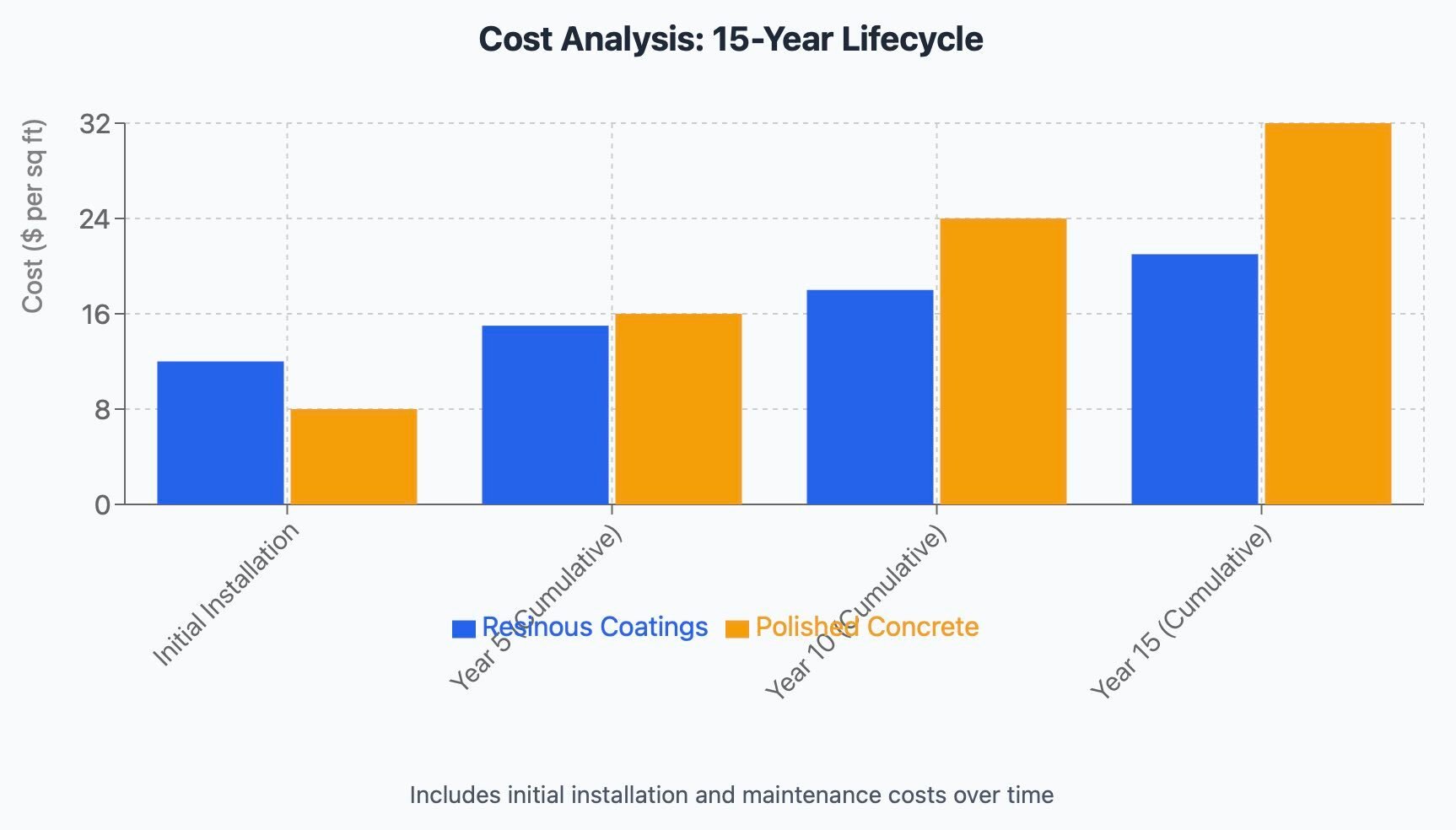
Resinous coatings create a protective barrier that shields the concrete substrate from damage, stains, and wear. While polished concrete may look beautiful initially, it tends to show wear patterns in high-traffic areas much sooner than resinous systems.
The durability difference stems from fundamental material properties:
- Resinous coatings form a sacrificial wear layer above the concrete
- Polished concrete relies on densification of the existing concrete surface
- In high-traffic areas like hallways, polished concrete develops "walk paths" where the polish wears unevenly
- Resinous coatings maintain consistent appearance across the entire floor

School case studies show resinous floors often maintain their appearance 2 times longer than polished concrete before requiring significant maintenance.
Better Chemical Resistance
In labs and cafeterias where spills are common, resinous coatings provide superior chemical resistance compared to polished concrete, which can be etched or stained by acids and other chemicals.
Chemical resistance comes from:
- The impermeable nature of resin systems
- Specialized topcoats designed for specific chemical exposures
- The ability to reapply topcoats when needed without full replacement
Science labs, art rooms, and culinary teaching spaces particularly benefit from this enhanced protection. Even simple substances like orange juice, vinegar, and cleaning chemicals can permanently damage polished concrete but are easily wiped from resinous surfaces.
Enhanced Safety Features
Resinous coatings can incorporate anti-slip additives to create surfaces with calibrated slip resistance—crucial for entrances, bathrooms, and other potentially wet areas. Polished concrete can become extremely slippery when wet.
Safety customization options include:
- Broadcast aggregates for consistent texture
- Varying degrees of slip resistance for different areas
- Maintaining ADA compliance while balancing cleanability
- Creating transition zones from wet to dry areas
Insurance providers often offer premium discounts for schools with properly specified slip-resistant flooring in critical areas.
Lower Lifetime Maintenance Costs
While the initial installation cost of resinous coatings may be higher than polishing, the long-term maintenance expenses are significantly lower. Polished concrete requires regular re-polishing and sealing to maintain its appearance, while resinous coatings typically need only routine cleaning.
Maintenance comparison:
- Resinous Coatings
- Daily: Dust mopping and spot cleaning
- Weekly: Damp mopping with neutral cleaner
- Annually: Deep cleaning, possible light buffing
- Every 7-10+ years: Possible topcoat refresh
- Polished Concrete
- Daily: Dust mopping and spot cleaning
- Weekly: Damp mopping with specialized cleaner
- Every 1-2 years: Re-application of surface treatments
- Every 3-5 years: Re-polishing worn areas
- Ongoing: Stain remediation as needed
This maintenance differential significantly impacts facilities budgets and staff resources over time.
Improved Noise Reduction
Resinous coatings, particularly those with thicker build systems, can provide some noise dampening qualities compared to the hard, reflective surface of polished concrete—an important consideration in learning environments.
Acoustic benefits come from:
- The slightly resilient nature of certain resin formulations
- Available sound-dampening underlayments compatible with resinous systems
- Reduced structure-borne sound transmission
Studies show excessive noise impacts student concentration and teacher vocal health. Even modest acoustic improvements can enhance learning outcomes, particularly for students with auditory processing challenges.
Greater Light Reflectivity
High-gloss resinous coatings can improve light reflectivity by up to 300%, potentially reducing lighting requirements and energy costs. While polished concrete also offers good reflectivity, it typically doesn't achieve the same levels as a high-gloss resinous system.
The reflectivity advantage translates to:
- Energy savings from reduced artificial lighting needs
- Enhanced visibility in corridors and stairwells
- Psychological benefits from brighter spaces
- Potential LEED points for energy efficiency
Some schools report up to 15% reduction in lighting-related energy costs after installing high-reflectivity flooring systems.
Implementation Considerations for Schools
Timing Installation
Summer breaks provide ideal installation windows, but fast-curing systems can be installed over weekend breaks if necessary.
Strategic scheduling options include:
- Summer installation - ideal for most areas, allows proper cure time
- Winter break - good for smaller, contained areas like science labs
- Weekend installations - possible with accelerated systems for critical areas
- Phased approach - different wings during different breaks
Phased Implementation
Consider a phased approach, installing different areas over multiple breaks to minimize disruption to school operations.
Effective phasing strategies include:
- Priority-based - start with areas of greatest need (failing floors, safety concerns)
- Zone-based - complete entire wings or floors before moving to next area
- Function-based - group similar areas (all science labs, all restrooms) for consistent specification
Budget Planning
While costs vary depending on system type and complexity, resinous flooring typically costs $5-15 per square foot—an investment that pays dividends through reduced maintenance and replacement costs over time.
Budget considerations should include:
- Initial installation cost
- Projected maintenance expenses
- Expected lifetime of the system
- Disruption costs during installation
- Value of aesthetic and performance improvements
Application Areas in Educational Settings
- Corridors and Hallways
- High durability systems with school branding
- Wayfinding elements for navigation
- Light-reflective finishes for safety
- Classrooms
- Noise-dampening formulations
- Soft matte finishes to reduce glare
- Easily cleanable surfaces
- Science Laboratories
- Chemical-resistant systems
- Optional integral cove base for spill containment
- Safety markings around equipment
- Cafeterias and Kitchens
- Slip-resistant formulations
- Antimicrobial options available
- Thermal shock resistance for kitchen areas
- Gymnasiums and Athletic Facilities
- Sports-specific coatings with proper coefficient of friction
- Impact resistance for weight rooms
- Court markings integrated into the flooring system
- Restrooms and Locker Rooms
- Waterproof systems
- Excellent biological stain resistance
- Enhanced slip resistance
Conclusion
For school administrators seeking flooring solutions that combine durability, aesthetic versatility, and lower lifetime costs, resinous coatings offer clear advantages over polished concrete. Their ability to withstand the unique challenges of educational environments while providing customized design options makes them an ideal choice for modern schools focused on creating safe, inspiring learning spaces that will stand the test of time.
When planning your next school flooring project, consider consulting with a resinous flooring specialist who can recommend specific systems tailored to different areas of your facility based on traffic patterns, function, and aesthetic goals.
LET OUR KNOWLEDGE AND EXPERTISE HELP ENSURE YOUR NEXT PROJECT IS SUCCESSFUL
ADDITIONAL RESOURCES:
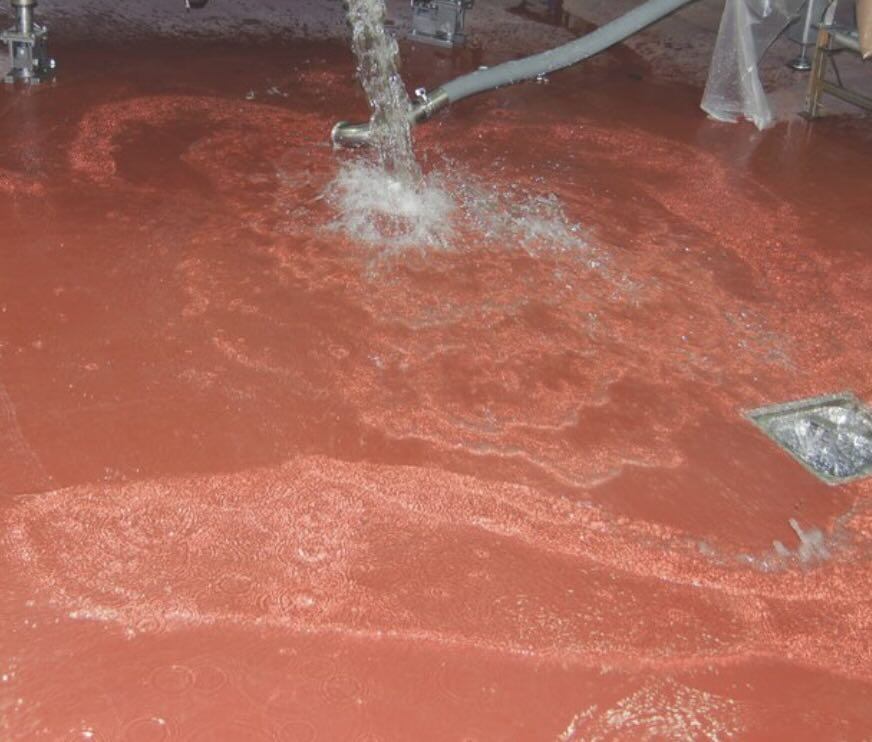
Shielding Your Concrete Floors: Essential...
Discover how the right coatings can safeguard...
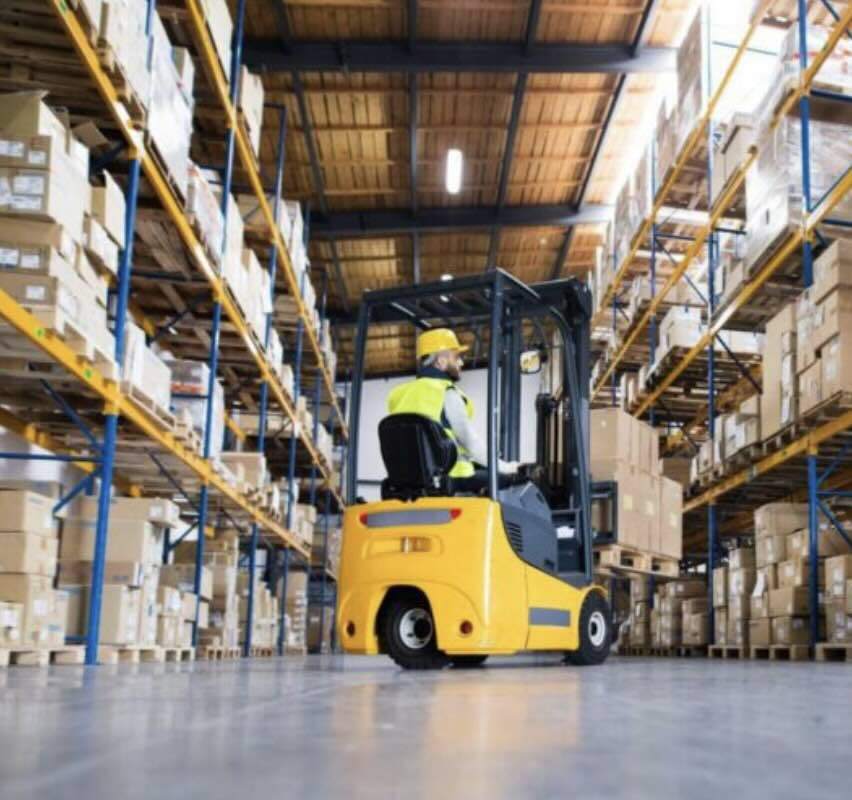
Warehouse Floor Coatings: Handling Forklift...
Discover how the right floor coatings can...
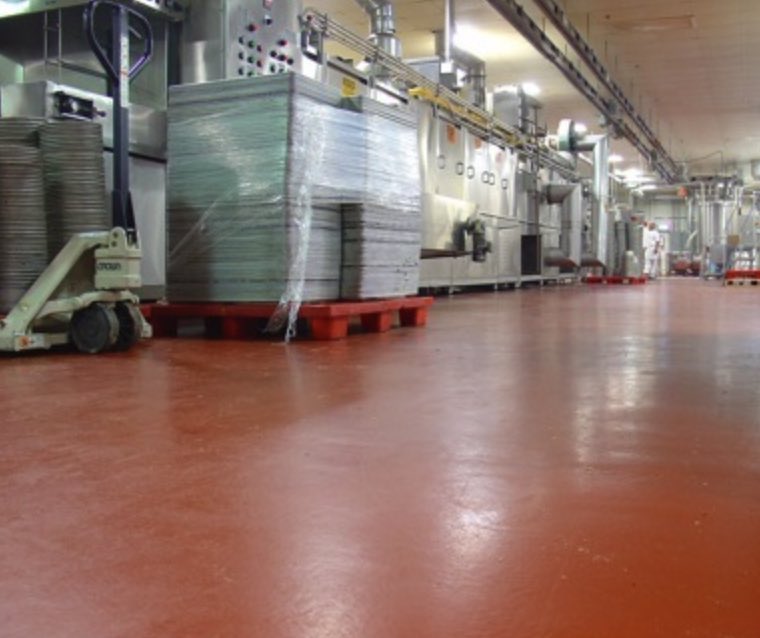
Advantages of Polyurethane Cement Floor Coatings
In the world of industrial and commercial...